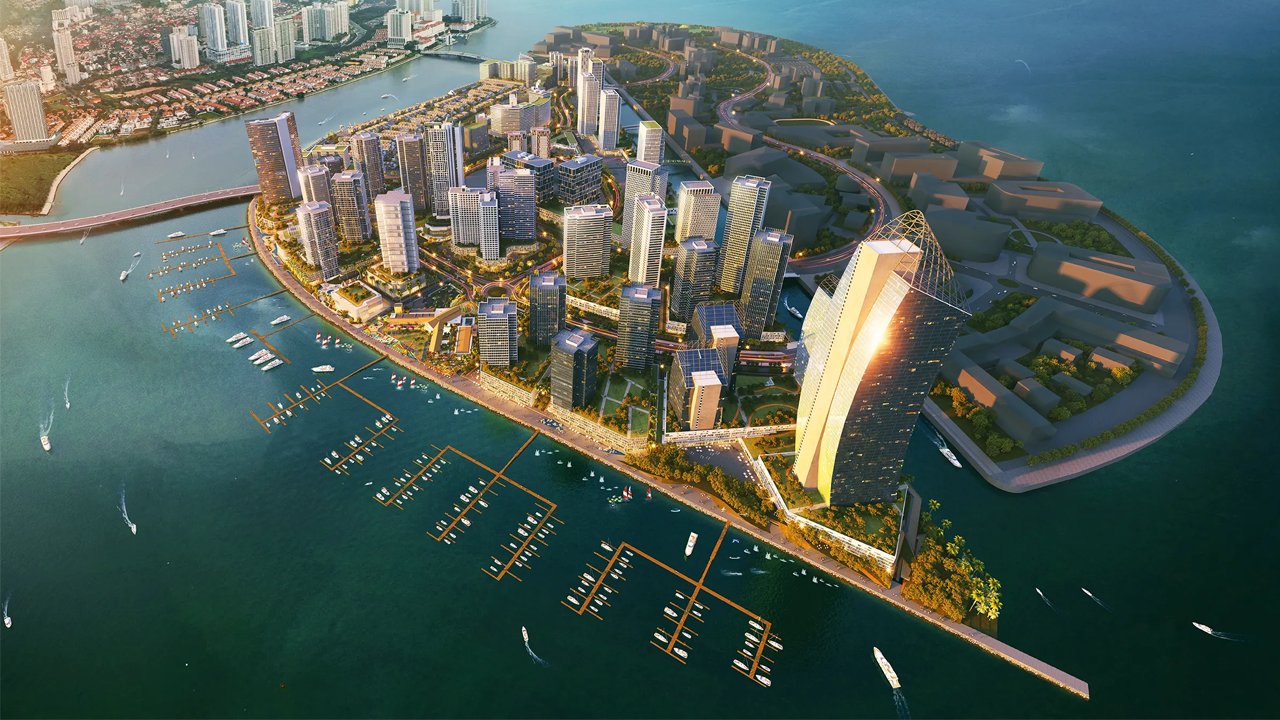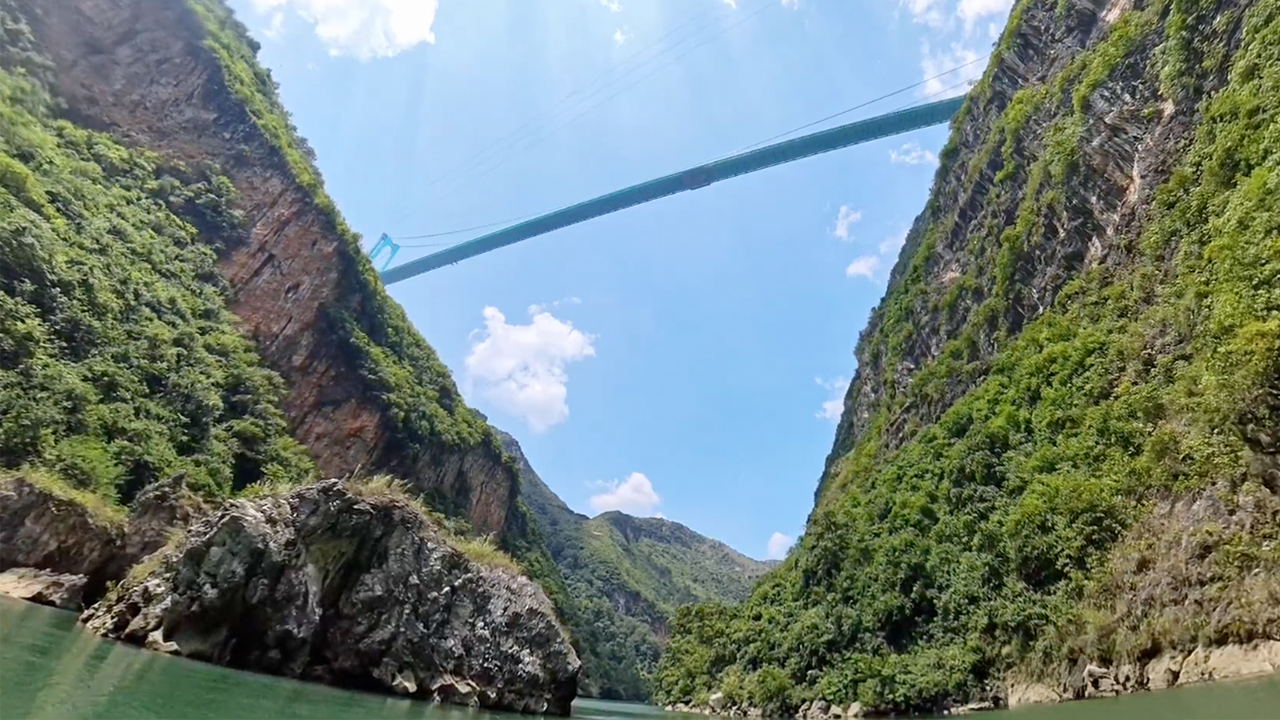This $3BN Mega-Dam Changes the Weather
- Youtube Views 1,647,558 VIDEO VIEWS
ANDHRA PRADESH is one of the largest states in India, home to more than 50 million people, two enormous rivers and a thriving agricultural industry.
But it’s also known for a pair of problems you wouldn’t expect to find in the same place — catastrophic floods and searing droughts.
For nearly a hundred years, engineers and governments have been trying to build something remarkable to address this critical issue — a gigantic project that would transfer water between flood and drought-prone areas, so there’s always the right balance.
From a record-breaking barrier to a hydropower plant and sprawling canals, the result of a plan that’s been around since the Second World War is now in full swing.
As incredible as it appears, however, it’s been tough going. Natural disasters, political clashes and land acquisition challenges have set this project back decades.
What started out as the “lifeline of the region” has at times looked dead and buried. Now, though, all hands are on deck to finish a build that’s already been making some serious waves.
On fertile ground
Extending for almost 1,000 km along India’s southeast coast is Andhra Pradesh. A leading producer of rice and tobacco, the state is highly dependent on the weather.
In a tropical monsoon climate like this, however, atmospheric conditions can be extreme. Across the region, almost 800,000 hectares of land experience regular flooding.
That’s an area five times as big as London, and in the last two decades things have gotten worse. 2024 saw a flood so devastating, dozens of lives were sadly lost.

Above: One of the many villages across Andhra Pradesh that have been hit hard by flooding in the past. Image courtesy of Public.Resource.Org / CC BY 2.0.
Meanwhile, there are severe droughts to deal with too. Four districts further to the west have seen years of sparse rainfall, leading to a decline in crop yields and lack of drinking water.
So, we’ve got one place where there’s a surplus of H2O, and another where it’s in short supply, all within the same state. If only there was some way to balance it out.
Enter: the Polavaram Project, stretching for more than 3.5 km across the Godavari, India’s second longest river.
It will provide 720,000 acres of land with much-needed irrigation, stand as a powerful flood defence, and generate a huge amount of power for the area.
This incredible new infrastructure will effectively control this key section of the river. With it, water can be transferred out when the levels get too high towards areas that don’t have enough.
Breaking it down
There are several parts to the project — each of them massive — and we’ll start by looking at the one that’s most easily visible. The spillway.
More than 50 metres high, it’s an immense barrier equipped with 48 hydraulic gates that can let water pass through if necessary — like when flooding is imminent.
The structure is built to withstand and protect against the biggest floods possible in the region — the kind that would only be expected once a millennium.

Above: Because floods in this region can get pretty intense, planners haven't taken any chances with the spillway. Image courtesy of Megha Engineering and Infrastructures Ltd.
Its discharge capacity of five million cusecs is higher than any other spillway on Earth. In case you need reminding, a cusec is a unit of measuring water equal to one cubic foot per second.
Measuring just over 1,100 metres horizontally, it’s the largest spillway in the world — even beating the one on the Three Gorges Dam in China.
Another record was broken during its construction, which had nothing to do with its length. In 2019, 32,000 cubic metres of concrete were poured in 24 hours. No other project had ever deposited so much of the material, in such a short space of time.
One feature that makes this different from most spillways is the unusual-looking structure that’s been built to one side of it — the fish ladder.

Above: The fish ladder has a total length of more than 250 metres. Image courtesy of Megha Engineering and Infrastructures Ltd.
It allows fish to continue swimming upstream to their breeding grounds during the monsoon season, when water levels get very high.
Big dig
Before any work could start on the spillway though, an enormous channel had to be dug out of the river bank.
This created an entirely new water course where the flow can be controlled with those moving gates before it’s allowed to pass back into the Godavari.
As for the dam itself, which is yet to properly begin construction, it will span almost two and a half kilometres across the river, roughly parallel to the spillway.
Made from a mixture of compacted earth and rock, it’s being constructed in two phases up to a height of 45 metres.

Above: Together, the spillway and main dam will stretch for several kilometres across the Godavari River and a new manmade channel. Graphic for illustrative purposes only.
The dam will sit on top of a concrete diaphragm wall built into the ground. Its job is to give the dam stability from all the water pressure sitting behind it, while ensuring there are no leaks.
But there was a big problem with it. In 2019, a huge flood hit the region, causing water to surge right up to the wall, washing some of it away.
The damage was so bad, the government opted to start again rather than try to repair it. Work on that is currently underway, and needs to be done by November 2025.
Now, building a dam like this can only be done in a dry area, which is why two cofferdams have been put in above and below where the new dam will go.
These are supposed to stop water getting in during construction, which is exactly what happened in 2019. To be fair, they were only partially built then, and have since been completed.
Carrying water
Once finished, the dam will help to form a new reservoir as well as direct water to the spillway on its journey down to the Bay of Bengal. But that’s not the only route that it can take.
A pair of giant canals will enable water to be sent east to reservoirs 180 km away, and west to the Krishna River.
The two end points of these new canals sit close to some of the state’s worst drought hotspots, which are mostly to the west — past the Krishna.
And yet, not everyone else is convinced that damming the river will be beneficial to them. Concerns have been raised that several villages in nearby Odisha are at risk of flooding once the project completes, due to backwater flowing upstream.
Although solutions have been proposed, such as building an extra embankment and giving compensation, an agreement between the local governments has not yet been reached.

Above: The project will also see the second and seventh longest rivers in India joined together. Map graphic for illustrative purposes only.
Finally, there’s the 960MW hydro plant that’s being constructed right next to the main dam. Because if you’re going to have all that water rushing around, you might as well try and harness some of its power.
Despite construction of this being in the early stages, the holes for the penstocks — 150 metres long and nine metres in diameter — are already clearly visible.
A penstock is basically a tunnel that takes water from a reservoir to a turbine, where the electricity is generated.
There’s a staggering amount of effort going into this scheme, so you can begin to understand why it’s not been a straightforward process.
But most wouldn’t have expected it to take almost a century to get where it is today — still years away from completion.
A century in the making
The Polavaram Project was originally conceived in the 1940s, when India was still part of the British Empire.
However, it wasn’t until 1980 that the foundation stone was laid, and then work didn’t properly start until 2004.
The next few years were mostly spent on the design, land acquisition and getting approvals from multiple government departments, which took a lot longer than planned.
Another decade passed before actual construction began at the main site. It had just been given national project status by India’s central government and a target finish date of 2018.

Above: The completion deadline was missed by a long way. Image courtesy of Megha Engineering and Infrastructures Ltd.
The question, then, is what’s caused the project to veer so far off course overall when some aspects, like the pouring of concrete, seemed to be going smoothly?
Well, it’s a combination of things. Firstly, acquiring all the land has been difficult, and it’s not hard to see why when you consider the impact on the local population.
Unfortunately, to establish a project that will benefit millions, others have made big sacrifices. Whole communities have been relocated because their homes stood in the way of the construction, or the new bodies of water being created. We’re talking at least 200,000 people.
Organising permanent new places to live for so many individuals has not been easy, especially when around half are from tribes that have lived in the area for generations.
Vast areas of forest are being submerged in order to build this new infrastructure, and there have been those disputes with neighbouring states as well.
Political wrangling
Thirdly, changes in local government haven’t exactly helped matters; rival parties have been quick to blame each other for the lack of headway.
After his recent re-election, Andhra Pradesh Chief Minister Chandrababu Naidu claimed his predecessor oversaw progress of less than 4% in his five years in office.
Finally, the main contractor has been changed — twice. Megha Engineering and Infrastructures Ltd is now in charge of the construction, but the fact they haven’t been from the beginning has caused delays.
These factors, along with inflation, complying with new environmental regulations and changes to the design and scope of the project have had an impact on the cost, too.
When construction began more than 20 years ago, USD $1.5BN was the estimate. The latest total is around $3.5BN, but at one point it was more than $6BN.

Above: Chandrababu Naidu (right of centre, reading papers) in front of the under-construction spillway. Image courtesy of Ministry of Water Resources, River Development and Ganga Rejuvenation.
Now, the pressure is on to wrap things up once and for all. In late 2024, Naidu declared the project must be completed by 2027, with phase one of the dam finished no later than October 2026.
At a media briefing, the state’s Minister for Water Resources said his boss had made it clear “there should not be any deviation” from the plan, “not even one hour.”
With this strict new target in place, hopefully the people of Andhra Pradesh will soon see the completion of this critical scheme that’s been going on for far too long.
A piece of new infrastructure this large and complicated was always going to be difficult to deliver, but the Polavaram Project has at times been more of a liability than a lifeline.
But when it does eventually cross the finish line and those first floods and droughts hit the region, we’ll know whether it’s been worth the wait.
Video narrated and hosted by Fred Mills. Additional footage and images courtesy of Megha Engineering and Infrastructures Ltd, Prasad Dulam, Al Jazeera English, Chandrashekhar Vittasandra, CNN-News18, ETV Andhra Pradesh, Government of Andhra Pradesh, Heather Cowper / CC BY 2.0, India Today, Karun / CC BY-SA 4.0, Polavaram Project Authority, Public.Resource.Org / CC BY 2.0 and WION.
We welcome you sharing our content to inspire others, but please be nice and play by our rules.







